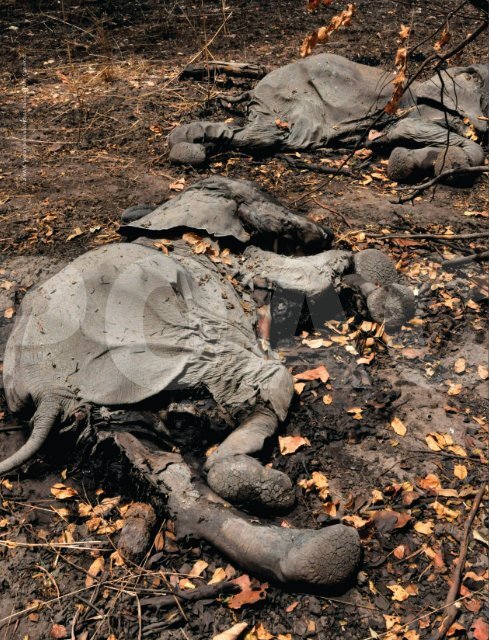ELEPHANTS & IVORY
ELEPHANTS & IVORY
ELEPHANTS & IVORY
You also want an ePaper? Increase the reach of your titles
YUMPU automatically turns print PDFs into web optimized ePapers that Google loves.
© IFAW/A. Ndoumbe/Bouba Ndjida National Park, Cameroon<br />
The major threats to species diversity, both<br />
historically and today, are habitat degradation,<br />
fragmentation and loss, and hunting. The latter<br />
may include hunting for food or hunting for the<br />
marketplace (including both live and dead animals,<br />
their parts and derivatives), 31 killing for “sport”<br />
(e.g. trophy hunting), and the killing of animals<br />
perceived as pests (i.e. problem animal control) or<br />
competitors (i.e. culling). 32<br />
In the case of elephants, habitat loss and<br />
hunting have both been involved in their<br />
precipitous decline in both distribution and<br />
numbers throughout much of Africa and Asia.<br />
While both factors remain operative today, it is<br />
habitat degradation, fragmentation and loss,<br />
driven by continued human population growth,<br />
that are now considered to be the major threats<br />
to elephants everywhere. Habitat degradation,<br />
fragmentation and loss reduce the distribution and<br />
numbers of animals relatively slowly and insipidly<br />
over time. Over the long term, however, no species<br />
(including elephants and, for that matter, humans)<br />
can survive without viable habitats.<br />
Illegal killing (poaching) of elephants for ivory<br />
and other products has also been a major cause<br />
of population declines, and remains a significant<br />
and growing threat in some areas, particularly in<br />
Central Africa, but elsewhere as well. 33 In contrast<br />
to habitat issues, killing individuals or groups of<br />
elephants has the immediate and highly visible<br />
result of reducing the numbers of animals in<br />
an area; the longer term implications are more<br />
complicated and depend on a variety of factors.<br />
Regardless, the discovery and documentation of<br />
dead elephants, e.g. victims of poaching, or ivory<br />
seized in international trade, have an immediate<br />
and powerful visual and visceral impact, and –<br />
superficially, at least – appear easier to quantify.<br />
As a consequence, poaching and illegal trade seem<br />
to receive more attention than habitat issues in<br />
many discussions of elephant conservation today.<br />
In this chapter, we attempt to place habitat<br />
loss and the hunting of elephants into clearer<br />
perspective, beginning with the ultimate threat,<br />
which surely must be the ever increasing and<br />
unsustainable 34 human population and its various<br />
interactions with surviving elephant populations<br />
(Figure 3).<br />
Asian elephants live in some of the most<br />
densely populated parts of the world. In contrast,<br />
African elephants live on a continent that for<br />
centuries was less densely populated than Asia.<br />
Today, however, some African range states<br />
are exhibiting the highest growth rates of any<br />
human populations. 35 Furthermore, much of the<br />
developed world continues to look to Africa as a<br />
means of sustaining and growing its ecological<br />
footprint in order to support and grow their<br />
already unsustainable life styles. 36 This reality has<br />
implications for elephants too.<br />
39


